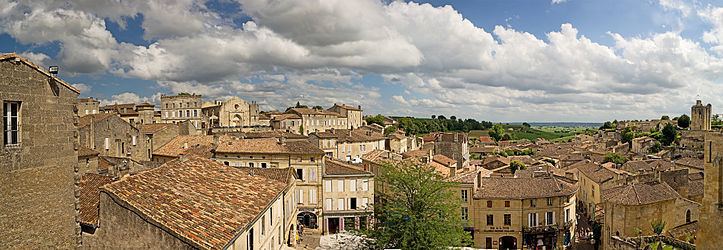Intercommunality Saint-Émilion Area 27.02 km² | Population (2012) 1,931 Local time Wednesday 3:52 AM | |
 | ||
Weather 8°C, Wind NE at 5 km/h, 88% Humidity Points of interest Iglesia monolítica de Saint, Château Ausone, Château Villemaurine, Clos des Menuts, Sarl Train Des Grands Vi | ||
Saint-Émilion ([sɛ̃t‿e.mil.jɔ̃]; Gascon: Sent Milion) is a commune in the Gironde department in Nouvelle-Aquitaine in south-western France.
Contents
Map of Saint-%C3%89milion, France
History
Saint-Émilion's history goes back to prehistoric times and is a UNESCO World Heritage Site, with fascinating Romanesque churches and ruins stretching all along steep and narrow streets.
The Romans planted vineyards in what was to become Saint-Émilion as early as the 2nd century. In the 4th century, the Latin poet Ausonius lauded the fruit of the bountiful vine.
The town was named after the monk Émilion, a travelling confessor, who settled in a hermitage carved into the rock there in the 8th century. It was the monks who followed him that started up the commercial wine production in the area.
Geography
Saint-Émilion is located 35 km (22 mi) northeast of Bordeaux, between Libourne and Castillon-la-Bataille.
Sights
Wine
Saint-Émilion is one of the principal red wine areas of Bordeaux along with the Médoc, Graves and Pomerol. The region is much smaller than the Médoc and adjoins Pomerol. As in Pomerol and the other appellations on the right bank of the Gironde, the primary grape varieties used are the Merlot and Cabernet Franc, with relatively small amounts of Cabernet Sauvignon also being used by some châteaux.
Saint Émilion wines were not included in the 1855 Bordeaux classification. The first formal classification in Saint-Émilion was made in 1955. Unlike the 1855 classification, it is regularly revised.
